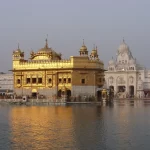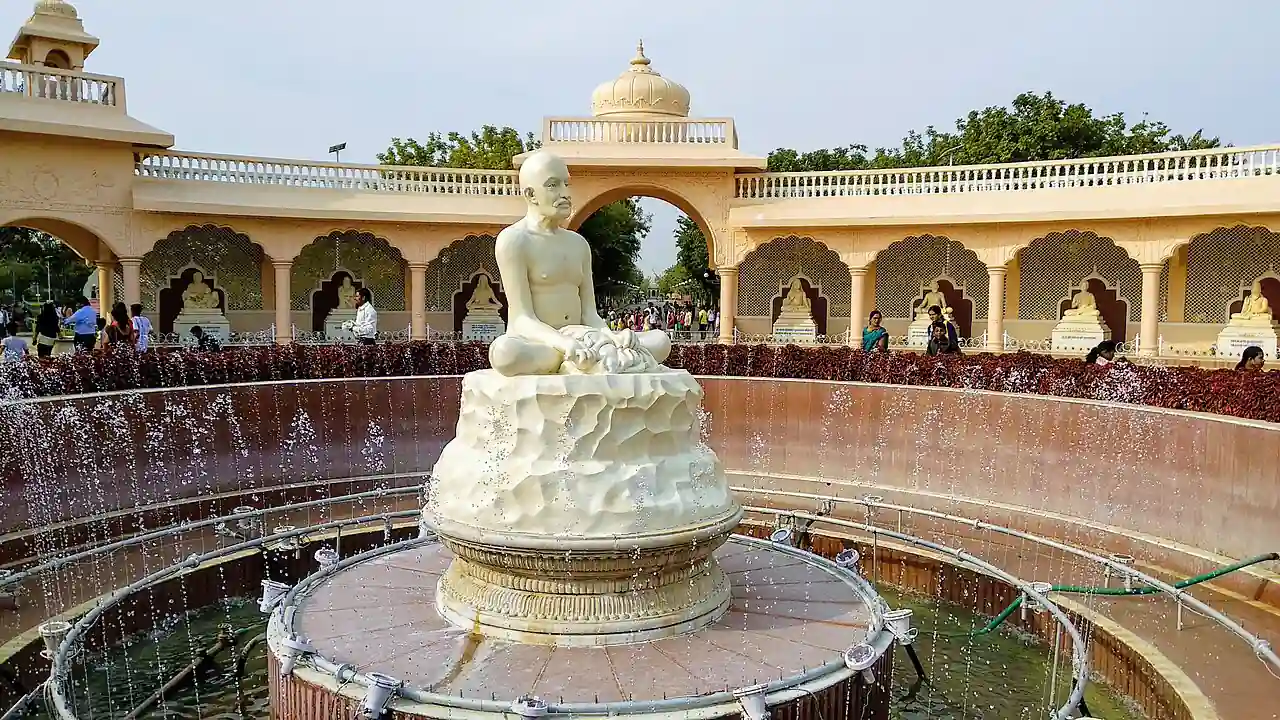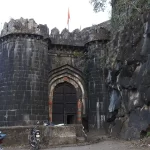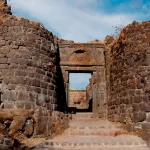Ready to experience the magic of Anand Sagar? Share this guide with fellow travellers or book your trip today!
“Where Spirituality Meets Splendour: Anand Sagar, Shegaon’s Crown Jewel”
🔴 Introduction
Nestled in the heart of Maharashtra’s Buldhana district, Anand Sagar, Shegaon, is a sprawling 350-acre complex that seamlessly blends spirituality, ecological innovation, and family-friendly recreation. Built in 2005 by the Shri Gajanan Maharaj Mandir Trust, this artificial lake and garden project was initially conceived to tackle Shegaon’s chronic water scarcity. Today, it stands as a testament to community resilience, drawing over 500,000 visitors annually for its temples, lush gardens, and mesmerising fountain shows .
For pilgrims, Anand Sagar offers a spiritual retreat centred around the legacy of Sant Gajanan Maharaj, a 19th-century saint revered for his miracles. For families, it’s a vibrant amusement hub with toy trains, aquariums, and picnic spots. But what truly sets Anand Sagar apart is its dual purpose: solving water crises while creating a self-sustaining tourist economy. This guide dives deep into its history, architecture, and practical travel tips, ensuring you experience every facet of this marvel.
🟢 Detailed Introduction to Anand Sagar, Shegaon, Maharashtra
🔘 A Sanctuary of Spirituality and Sustainability
Nestled in the serene landscapes of Maharashtra’s Buldhana district, Anand Sagar, Shegaon, stands as a testament to human ingenuity and divine devotion. Spanning 350 acres, this sprawling complex is not just a tourist attraction but a lifeline for the water-scarce region. Conceived in 2005 by the Shri Gajanan Maharaj Mandir Trust, Anand Sagar was born out of necessity—to combat Shegaon’s crippling water shortages—but evolved into a harmonious blend of ecological innovation and spiritual solace.
Today, it draws over half a million visitors annually, from pilgrims seeking blessings at the Gajanan Maharaj Temple to families revealing in its lush gardens and vibrant amusement park. It’s tagline, “Where Miracles Meet Modernity”, captures its dual identity as a sacred site and a sustainable marvel.
🔘 A Historical Triumph Over Adversity
The story of Anand Sagar is rooted in crisis. In the early 2000s, Shegaon’s groundwater reserves plummeted, threatening livelihoods. The Trust, inspired by the teachings of the 19th-century saint Shri Gajanan Maharaj, embarked on an audacious mission: creating a 55-acre artificial lake by channeling water from the Man River, 9 km away.
Despite a staggering monthly expenditure of ₹50 lakh and skepticism from critics, the Trust persevered, investing ₹300 crore to transform barren land into a reservoir. The lake not only rejuvenated local water tables but also funded itself through tourism—a self-sustaining model later replicated across India. As a Trust spokesperson shared in an interview, “We wanted to honour the saint’s legacy of service. Every ticket sold here ensures water for Shegaon’s future”.
🔘 Architectural Grandeur and Eco-Conscious Design
Anand Sagar’s architecture marries tradition with modernity. At its heart lies the shimmering Anand Sagar Lake, encircled by walking trails and dotted with islands. The Dhyan Kendra, a meditation center on an artificial island, features a 35-foot statue of Swami Vivekananda and silent halls for reflection. Noteworthy structures include the Ganesh Temple, where a copper idol crafted from 1,008 lotus (vessels) symbolises unity, and the Shiva Temple, adorned with carvings reminiscent of ancient forest shrines.
Sustainability is woven into its design: solar-powered lights illuminate pathways, while rainwater harvesting systems nurture its 50,000 trees. The complex also houses an amphitheater for laser-lit fountain shows and a toy train that chugs past gardens and playgrounds—proof that spirituality and fun coexist seamlessly.
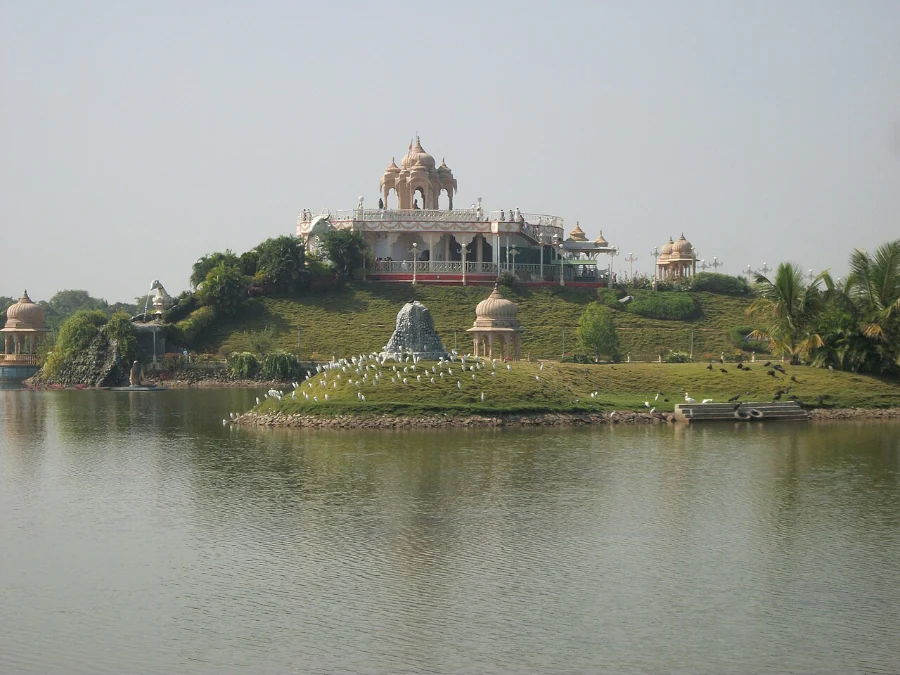
🔘 Cultural Tapestry and Community Impact
Shegaon’s identity is inseparable from Anand Sagar. The town, home to 59,672 residents (2011 census), thrives on a mix of agriculture, cotton trading, and religious tourism. Marathi is the lingua franca, though Hindi and English are widely spoken. The complex has uplifted the local economy, creating jobs for guides, artisans, and food vendors.
During festivals like Samadhi Din (September 8), which marks Gajanan Maharaj’s passing, the town pulses with night-long bhajans and processions. Local shopkeeper Rajesh Patil remarks, “Before Anand Sagar, Shegaon was just a dot on the map. Now, pilgrims from Chennai to Chandigarh visit us—our kachori shop feeds hundreds daily!” This cultural symbiosis underscores how faith and commerce can drive communal prosperity.
🔘 A Journey Through Seasons
Anand Sagar’s charm shifts with the seasons. Winters (October–February) offer cool breezes perfect for lakeside picnics, while monsoons (June–September) cloak the complex in emerald greenery, ideal for photographers. Summers (March–June), though hot, see fewer crowds, allowing introspective visits to the temples.
The complex adapts to the climate: boat rides halt during heavy rains, but the indoor aquarium and meditation halls remain open. Nearby, the Gajanan Maharaj Temple (1 km away) provides spiritual grounding, while Shegaon’s markets bustle with handcrafted idols and saffron-stained Prasad. Whether you’re navigating monsoon showers or winter sunsets, Anand Sagar promises a transformative experience.
🔘 Gateway to Maharashtra’s Hidden Gems
Beyond its boundaries, Anand Sagar serves as a gateway to Maharashtra’s lesser-known treasures. A short drive reveals the Lonar Crater Lake, a celestial wonder formed by a meteorite, and the historic Buldhana Fort. Back in Shegaon, the Sansthan Museum chronicles Gajanan Maharaj’s miracles through artefacts and murals.
For travellers, the journey is as enriching as the destination: Shegaon’s railway station, a hub on the Mumbai-Nagpur line, connects pilgrims and adventurers alike. As the sun dips below the horizon, casting golden hues over Anand Sagar’s lake, one truth becomes clear—this is not just a destination, but a pilgrimage to the soul of Maharashtra.
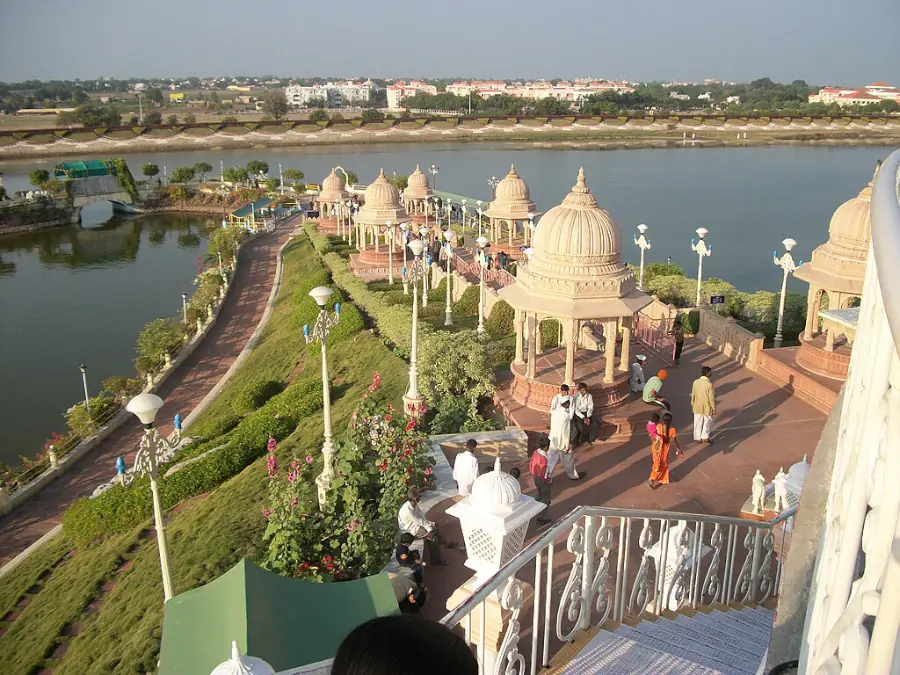
🟣 Section Breakdown:
🎯 History & Vision: The Story Behind Anand Sagar
🎯 Architectural Marvels: Temples, Lakes, and More
🎯 How to Reach: Distances from Major Cities
🎯 Things to Do: Attractions & Activities
🎯 Travel Tips: Weather, Accommodation, and Local Cuisine
🎯 Cultural Insights: Demographics, Economy, and Festivals
🎯 FAQs: Your Questions Answered
Also Read
Aga Khan Palace – Pune’s Monument of Freedom and Legacy
Anand Sagar, Shegaon: Spiritual History and Travel Guide
🟠 Detailed Section Breakdown:
⭕ History & Vision: Solving Water Scarcity with Faith
➤ The Water Crisis & a Saint’s Legacy
In the early 2000s, Shegaon faced severe water shortages, with groundwater levels plummeting. The Shri Gajanan Maharaj Mandir Trust, managing the town’s iconic temple, embarked on an ambitious mission: creating a 55-acre artificial lake by channeling water from the Man River, 9 km away. Despite a staggering monthly cost of ₹50 lakh, the Trust persisted, driven by the saint’s teachings of community welfare .
➤ From Necessity to National Model
The lake not only revived local water tables but also funded itself through tourism. With an initial budget of ₹300 crore, the Trust expanded the site into a spiritual-recreational hybrid, featuring meditation centres, amphitheaters, and 50,000 trees. Today, Anand Sagar serves as a blueprint for projects like Nagpur’s Ambazari Lake redevelopment .
Interview Insight: “We wanted a place where devotees could find peace and families could create memories”, says a Trust representative. “The revenue from tickets and donations keeps the lake thriving”.
⭕ Architectural Marvels: Where Tradition Meets Innovation
➤ The Lake & Island of Reflection
The centrepiece, Anand Sagar Lake, is encircled by walking trails and dotted with islands. At its heart lies the Dhyan Kendra (Meditation Centre), a replica of Kanyakumari’s Vivekananda Rock Memorial. A 35-foot statue of Swami Vivekananda towers above a silent meditation hall, accessible via boat rides .
➤ Temples & Artistic Flourishes
⦿ Ganesh Temple: A Copper idol crafted from 1,008 lotus (vessels) welcomes visitors.
⦿ Shiva Temple: Intricate carvings mirror ancient forest shrines, surrounded by fragrant gardens.
⦿ Open-Air Theatre: A 3,500-seat amphitheater hosts nightly musical fountain shows synchronised with lasers .
➨ Sustainable Design: Solar-powered lighting and rainwater harvesting systems underscore the Trust’s eco-conscious ethos.
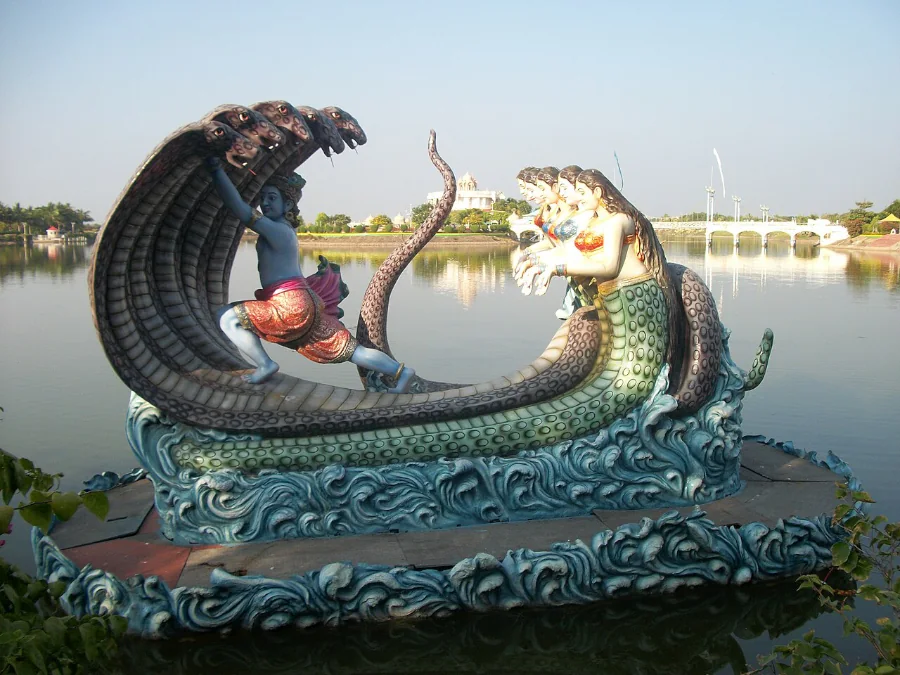
⭕ How to Reach: Distances from Major Cities
➤ By Air:
– Nearest Airport: Nagpur (292 km), connected to Delhi, Mumbai, and Hyderabad.
➤ By Train:
⦿ Shegaon Railway Station lies on the Mumbai-Nagpur line.
➤ Key trains:
⦿ Gitanjali Express (Mumbai CST to Howrah)
⦿ Sewagram Express (Mumbai to Nagpur)
⦿ Vidarbha Express (Mumbai to Gondia) .
➤ By Road:
⦿ From Mumbai: 550 km via NH6 (10–12 hours).
⦿ From Pune: 600 km (12 hours).
⦿ From Nagpur: 300 km (5 hours) .
Note: Distance is approximate and travel time may vary. Please check with google maps or local authorities before travelling.
➨ Things to Do: Attractions & Activities
➤ Spiritual Experiences:
⦿ Attend the Evening Aarti at Gajanan Maharaj Temple.
⦿ Meditate at Dhyan Kendra as sunset paints the lake golden.
➤ Family Fun:
⦿ Toy Train Ride: A 20-minute circuit of the complex (₹30/person).
⦿ Aquarium & Playgrounds: Kids adore the underwater tunnel and swings.
➤ Seasonal Highlights:
⦿ Winter (October–February): Ideal for boating and garden strolls.
⦿ Monsoon (June–September): Lush greenery and cooler temps .
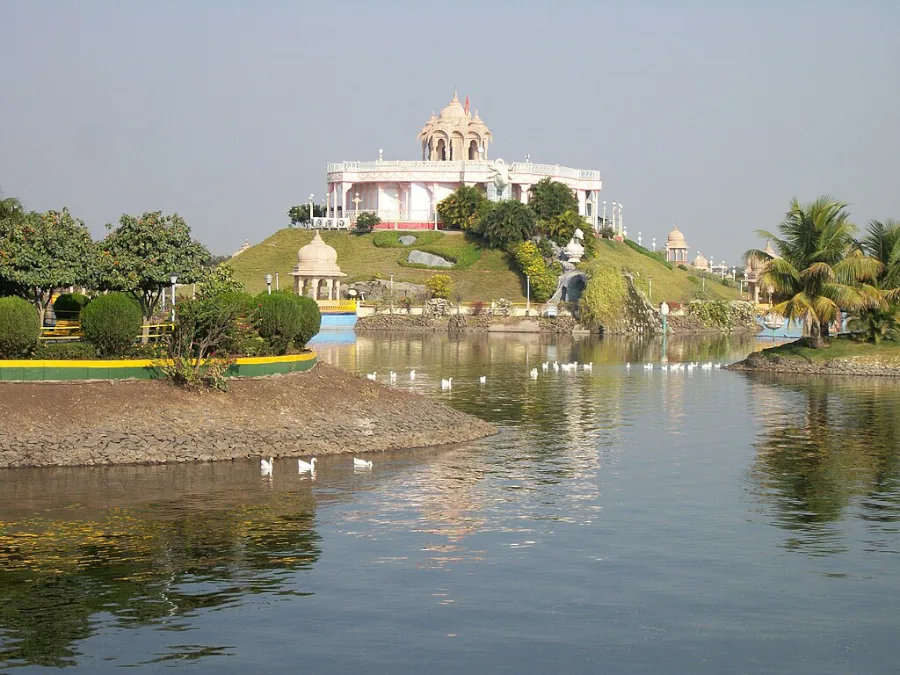
⭕ Travel Tips: Weather, Food, & Stay
➤ Climate:
⦿ Summer (March–June): Hot (up to 42°C) – carry sunscreen.
⦿ Monsoon (June–September): Moderate rains, 25–35°C.
⦿ Winter (October–February): Pleasant (14–30°C) – best for visits.
➤ Local Eats:
⦿ Shegaon Kachori: Flaky pastry stuffed with spiced lentils.
⦿ Mava Kulfi: Creamy saffron ice cream sold near the temple.
➤ Stay Options:
⦿ Budget: Sansthan-run Bhakta Niwas (₹500/night).
⦿ Luxury: Ginger Hotels (₹2,500/night) .
Note: Hotel rates are subject to change and may vary based on factors like seasonality, availability, and promotions. Taxes, service charges, and other applicable fees are not always included in displayed rates.
⭕ Cultural Insights: Demographics & Economy
➤ Shegaon’s Profile:
⦿ Population: 59,672 (2011 census), 66% Hindu, 23% Muslim.
⦿ Economy: Cotton trading, engineering industries, and religious tourism drive growth.
⦿ Language: Marathi (official), Hindi, and English widely spoken.
➤ Festivals:
⦿ Samadhi Din (September 8): Marks Gajanan Maharaj’s passing, with night-long bhajans.
⦿ Ganesh Chaturthi: The copper Ganesh idol draws lakhs of devotees.
⛔ FAQs
What’s the entry fee for Anand Sagar?
₹30 for adults; free for donors.
Is non-vegetarian food allowed?
No – the complex is strictly vegetarian.
Best time for the musical fountain show?
8 PM – arrive early for front-row seats!.
⛔ Conclusion
Anand Sagar is more than a tourist spot – it’s a story of faith, ecology, and community triumph. Whether you seek solace at its temples or joy on its toy train, this Maharashtra gem promises an unforgettable journey.
⛔ Sources:
🎯 Ghumakkar Travel Blog
🎯 Tata Neu Travel Guide.
⛔ Image Credit
Wikimedia Commons – Anandsagar shegaon
Wikimedia Commons – Dhyan Mandir at Anand Sagar Shegaon
Wikimedia Commons – Anand Sagar, Shegaon
Wikimedia Commons – Kaliya Mardan at Anand Sagar
Wikimedia Commons – Anand sagar maharastra
For more information, you can visit our website: ExploreXP
Inspired? Pin this guide for your Shegaon trip or tag us in your Anand Sagar photos! 🌿🚂
- Aranya Devi Temple – Arrah, Bihar: Where Mythology Meets Modern Devotion

- Anjaneri Hill – Nashik, Maharashtra: Where Myth Meets Majesty
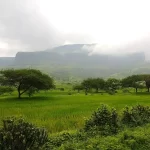
- Anand Sagar, Shegaon, Maharashtra – A Spiritual Oasis Blending Serenity & Adventure
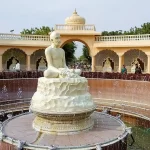
- Aga Khan Palace – Pune’s Monument of Freedom and Legacy
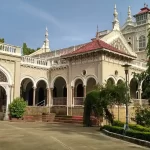
- Attari Sham Singh Railway Station – A Historic Gateway to Punjab’s Heritage

- Amritsar, Punjab: A Timeless Tapestry of Spirituality, History, and Cultural Grandeur
